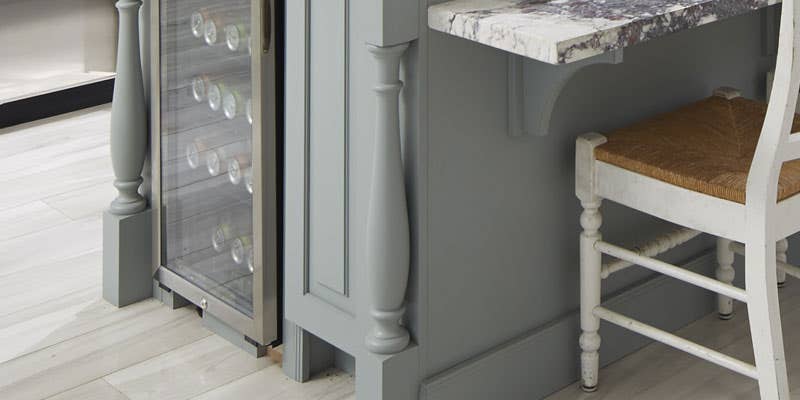Customize Your Kitchen Look with One-of-a-kind Legs For Kitchen Island Choices
Customize Your Kitchen Look with One-of-a-kind Legs For Kitchen Island Choices
Blog Article
Crucial Elements to Take Into Consideration When Picking Legs For Cooking Area Island
Selecting the proper legs for a kitchen island entails a careful analysis of multiple aspects that can significantly affect both functionality and aesthetic allure. As we explore these aspects, it becomes clear that each decision can have far-ranging implications for the general cooking area experience.
Material Options
When choosing legs for a cooking area island, understanding the different product options is necessary for attaining both aesthetic charm and architectural integrity (Legs For Kitchen Island). The choice of product dramatically influences not only the toughness of the island yet also its general style and capability
Metal legs, commonly made from stainless steel or wrought iron, add a commercial and modern-day feeling while ensuring sturdiness and stability. These materials are resistant to wear and can sustain significant weight, making them excellent for bigger islands.
An additional alternative is engineered materials, like MDF or plywood, which can be more cost-effective while still offering a range of coatings. Nonetheless, they might not offer the same degree of security as solid wood or steel. Products such as acrylic or glass can create a modern look, though they might need additional assistance to make sure stability.
Inevitably, the choice of material for cooking area island legs must align with the wanted performance and the overall motif of the kitchen area.
Design And Style

When thinking about design, the form and coating of the legs are essential. Conical legs can provide a sense of agility and elegance, while thicker, much more robust legs can share stamina and stability. Furthermore, the finish-- be it painted, tarnished, or natural-- should enhance the cabinets and kitchen counter products to create a unified appearance.
Moreover, the layout of the legs can likewise show personal preference. Custom-made or decorative legs, such as those including intricate carvings or special geometric shapes, can serve as prime focus, including personality and character to the kitchen area. Eventually, the right choice will certainly not just enhance functionality yet additionally raise the aesthetic allure, making the cooking area island a standout function of the home.
Height Factors To Consider
Choosing the proper height for kitchen area island legs is crucial, as it directly influences both performance and convenience. The basic elevation for a kitchen island commonly varies from 36 to 42 inches, aligning with typical kitchen counter heights.

It is also essential helpful resources to represent users' heights and preferences. Tailoring the elevation can make certain a comfortable experience for all relative, making the kitchen area island a more delightful and practical area.
Weight Support
Making certain appropriate weight support for kitchen area island legs is important for both safety and security and performance. The kitchen island commonly serves numerous functions, consisting of cooking, eating, and extra storage space, necessitating a durable support structure. When picking legs, it is important to consider the general weight capacity required based upon the island's intended use and the products that will be put on it.
The choice of material for the legs plays a substantial role in their weight-bearing abilities. Strong wood, metal, and sturdy composites typically give exceptional stamina contrasted to lighter materials. Furthermore, the layout of the legs-- whether they are right, tapered, or have a pedestal form-- can affect their capacity to disperse weight efficiently throughout the framework.
Always speak with the producer's specifications concerning tons limits to guarantee that the legs can sustain the intended weight without compromising safety. In recap, picking cooking area island legs with appropriate weight support is vital for producing a safe and functional cooking area.
Installation and Maintenance
Correct installment and upkeep of kitchen area island legs are important for guaranteeing longevity and stability. This typically involves protecting the legs to the island base using proper fasteners, making sure that the legs are degree and lined up.
Once set up, normal maintenance is essential to protect the honesty and appearance of the legs - Legs For Kitchen Island. For wood legs, periodic cleaning with a wet cloth and application of appropriate wood polish can protect against moisture damages and keep their surface. Steel legs might require a mild cleansing service to get rid of oil and grime, adhered to by a completely dry cloth to avoid rust formation
In addition, inspect the legs frequently for indications of wear or damages, such as cracks or loosened joints. Tightening see this here screws or bolts as required can also prolong the life expectancy of the legs. By sticking to these setup and upkeep techniques, home owners can ensure that their kitchen island remains durable and visually appealing for many years to find.
Final Thought

Visual comprehensibility is critical in choosing the design and layout of legs for a kitchen island, Discover More Here as these elements considerably affect the total setting of the space. Tapered legs can offer a feeling of agility and style, while thicker, more robust legs can convey stamina and stability.Selecting the proper elevation for cooking area island legs is critical, as it directly impacts both functionality and comfort. In recap, selecting cooking area island legs with sufficient weight assistance is necessary for developing a safe and functional culinary space.
In conclusion, selecting legs for a kitchen island demands mindful factor to consider of numerous variables, consisting of product choices, style, height, weight support, and installment.
Report this page